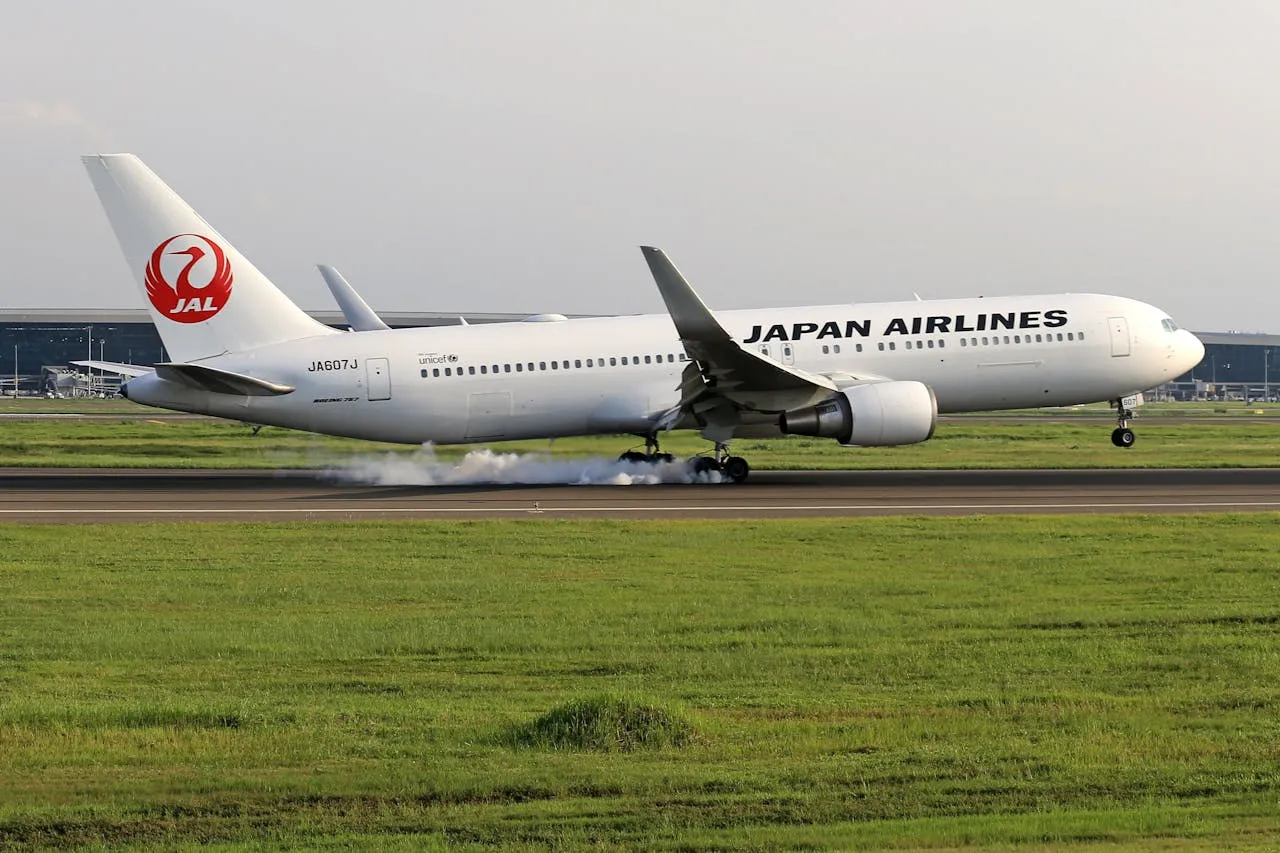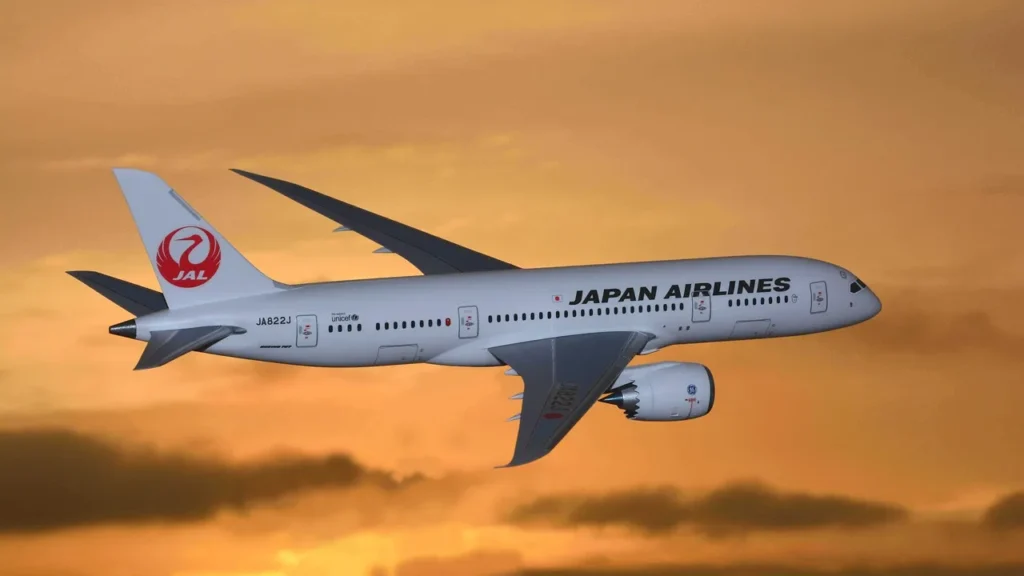
JAL Group Reports Consolidated Financial Results for Fiscal Year Ended March 2025
Japan Airlines Co., Ltd. (JAL Group) today announced its consolidated financial results for the fiscal year ending March 31, 2025, covering the period from April 1, 2024, to March 31, 2025. The airline group achieved record-high revenue since its relisting, driven by a rebound in travel demand, strategic partnerships, and investments in non-aviation businesses.
Robust Financial Performance
For the full fiscal year, the JAL Group posted consolidated revenue of JPY 1,844 billion, marking an 11.6% increase year-over-year. This performance represents the highest level of revenue achieved since the airline’s return to the Tokyo Stock Exchange following its financial restructuring.
Operating expenses rose by 9.8% year-over-year to JPY 1,693.4 billion. Key cost drivers included the depreciation of the Japanese yen, inflationary pressures, and increased investment in human capital to support post-pandemic recovery and future growth. Despite rising costs, the company reported operating profit (EBIT) of JPY 172.4 billion, an 18.7% increase compared to the previous year. Net income rose 12.0% year-over-year to JPY 107.0 billion, reflecting strong performance across multiple segments and the effectiveness of ongoing reforms.
Performance by Business Segment
Full-Service Carrier Business
The Full-Service Carrier segment, JAL’s core business, delivered solid results. Revenue rose 9.8% to JPY 1,451.8 billion, supported by a continued surge in international travel demand and improved domestic passenger load factors. EBIT from this segment reached JPY 111.1 billion, up 4.7% from the previous year.
- International Passenger Business: International passenger traffic showed robust growth due to continued strong inbound demand from overseas tourists and a gradual recovery in outbound travel by Japanese residents. Passenger numbers rose 14.4% year-over-year, while revenue increased by 11.9%.
- Domestic Passenger Business: Promotional campaigns tailored to stimulate domestic demand were successful. These initiatives resulted in a record-high revenue passenger load factor of 82.9% in the fourth quarter. Overall, full-year domestic passenger numbers grew 2.9%, while domestic passenger revenue increased 3.7%.
LCC (Low-Cost Carrier) Business
JAL’s LCC business, consisting of ZIPAIR and SPRING JAPAN, made significant progress during the year.
ZIPAIR, JAL’s international low-cost subsidiary, aims to double its business scale by the early 2030s. A major strategic move includes transferring Boeing 787-9 aircraft from the parent company starting in fiscal 2027 to support network expansion and enhance fleet efficiency.
SPRING JAPAN celebrated a major milestone by reaching six million cumulative passengers as of March 2025. The carrier expanded its route network by increasing flight frequencies to Shanghai (Pudong) and launching new services to key Chinese cities such as Beijing and Dalian. These efforts are expected to build long-term profitability and brand presence in Northeast Asia.
Non-Aviation Businesses
Non-aviation segments, including Mileage/Finance and Commerce, recorded strong growth and rising profitability, aided by strategic reforms and customer-oriented service development.
- Mileage/Finance Initiatives: JAL launched the “JALCARD Sky Mate Fare” program in February 2025, offering special domestic fares to JALCARD members under 25 years of age. The program significantly boosted new signups, with JALCARD memberships among this demographic more than doubling by the end of March.

Additionally, the launch of JAL NEOBANK PREMIUM in March introduced savings services that enable users to earn airline miles through yen and foreign currency deposits. These services are part of JAL’s strategy to deepen customer engagement through financial innovation.
- E-commerce and Product Sales: The airline’s branded food product line also gained traction, with cumulative sales of the “JAL Special Original Beef Curry” surpassing one million servings. JAL plans to expand its successful JAL SELECTION product lineup in the coming year.
- Digital Services: New digital platforms like “JAL Mobile” and the premium “JAL/JCB Card Platinum Pro” were introduced, making it easier for users to accumulate and redeem miles across various services.
Cargo Business Expansion
JAL’s cargo operations recorded meaningful developments, particularly in international routes:
- In March 2025, the airline launched cargo services between Tokyo (Narita) and Hanoi, marking JAL’s first regular Southeast Asia cargo route since restarting dedicated cargo flights.
- A strategic codeshare agreement with KALITTA Air was signed, enabling regular cargo services between Tokyo (Narita) and Chicago beginning May 10, 2025. This partnership strengthens JAL’s transpacific cargo network and enhances service capacity to North America.
- In February, JAL was awarded the IATA CEIV Lithium Battery Transport Certification, ensuring high safety standards in transporting lithium-ion batteries—an increasingly important segment in global air freight.
Expo 2025 and Future Mobility
JAL is actively participating in Expo 2025 Osaka, Kansai, Japan, aligning its initiatives with both the Expo’s sustainable development goals and JAL’s long-term vision. The airline has launched three major initiatives:
- Enhancing Air Travel Accessibility
- Promoting Travel to Regional Japan
- Creating New Regional Traffic Flows
As part of its exhibit, JAL established an immersive theater experience called “SoraCruise by Japan Airlines”, which showcases next-generation air mobility solutions. In a unique collaboration with Bandai Namco Holdings, JAL launched the “JAL × GUNDAM FLY TO THE FUTURE PROJECT”, featuring the specially designed JAL Gundam Jet, now operating as part of the Expo-themed fleet.
Network and Fleet Development
To support growing demand and regional development, JAL is expanding both its domestic and international networks.
- Starting in April 2025, JAL initiated a joint venture with Garuda Indonesia to enhance connectivity between Japan and Indonesia.
- From May 31, 2025, JAL will begin new service between Tokyo (Narita) and Chicago, targeting North American and Southeast Asian/Indian transit demand. Additionally, beginning July 2025, the airline will increase flight frequency on its Osaka (Kansai)–Honolulu and Nagoya (Chubu)–Honolulu routes to capture Japan–Hawaii tourism traffic.
- On the domestic front, JAL continued its “DEEEEP JAPAN” project, promoting less-traveled destinations. Aircraft updates include the deployment of 11 new Airbus A321neo aircraft from fiscal 2028, replacing Boeing 767s on high-demand Haneda routes.
- Looking further ahead, JAL will introduce 10 Boeing 787-9s and 20 Airbus A350-900s starting in FY2027 to support long-haul growth and enhance onboard experience.
Commitment to Sustainability
In line with its environmental goals, JAL began using domestically produced Sustainable Aviation Fuel (SAF) from May 1, 2025. This SAF, sourced from waste cooking oil through a partnership with the Cosmo Group, marks a step toward decarbonizing aviation in Japan.
Moreover, JAL is collaborating with Airbus, Nippon Paper Industries, Sumitomo Corporation, and Green Earth Institute to explore SAF made from domestically sourced wood materials. These partnerships underline JAL’s commitment to achieving net-zero CO2 emissions by 2050.
Dividend and Shareholder Returns
Reflecting its strong performance, JAL has revised its dividend upward for the fiscal year ending March 2025. The year-end dividend has been raised from JPY 40 to JPY 46 per share, bringing the full-year dividend to JPY 86 per share, up from the previously forecasted JPY 80.
Looking ahead, JAL plans to maintain its dividend forecast of JPY 92 per share for the fiscal year ending March 2026, as announced on March 19, 2025. This includes an interim dividend of JPY 46 per share, corresponding to a dividend payout ratio of 35.0%.
The company reaffirmed its commitment to delivering continuous and stable shareholder returns as part of its long-term corporate value enhancement strategy.

